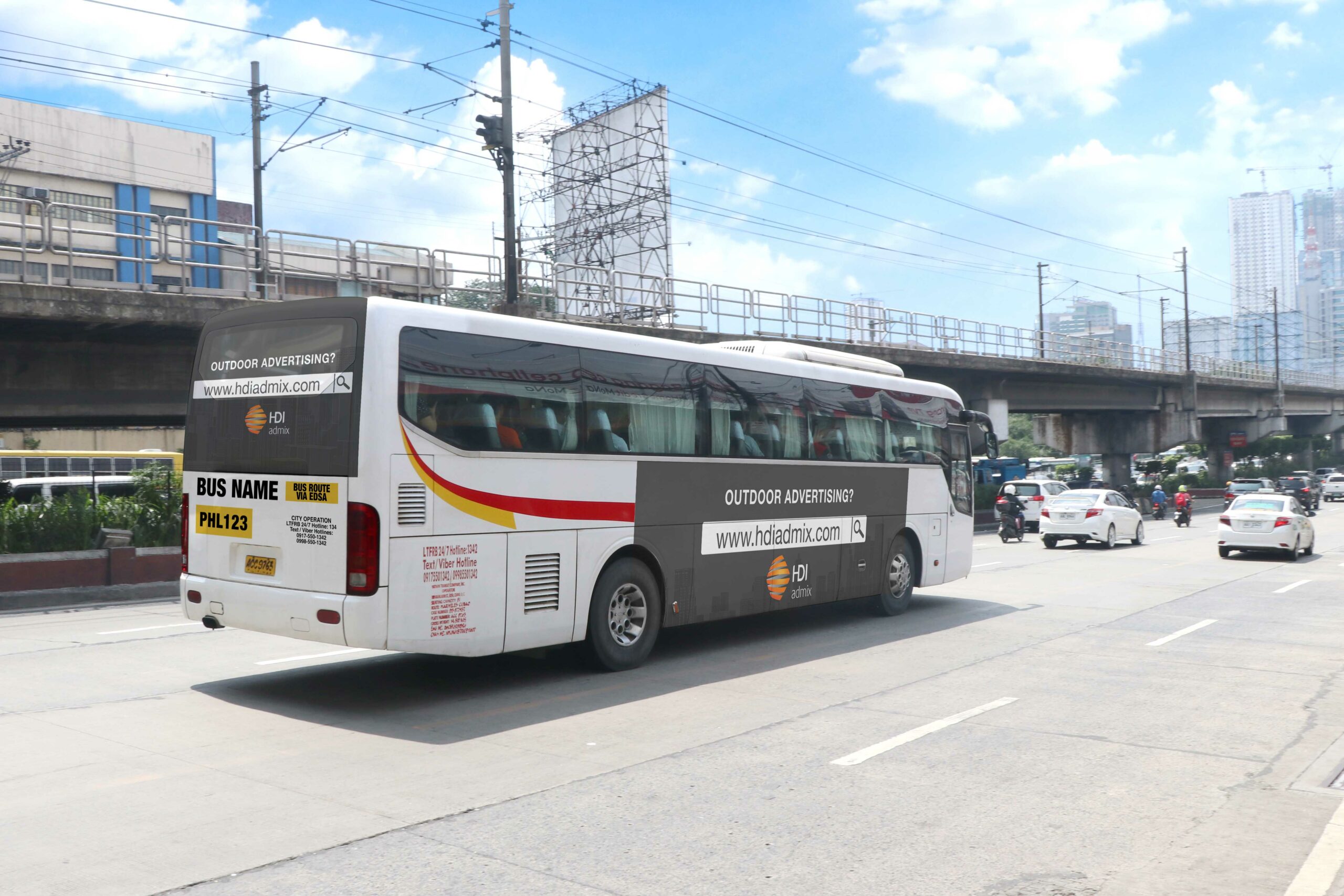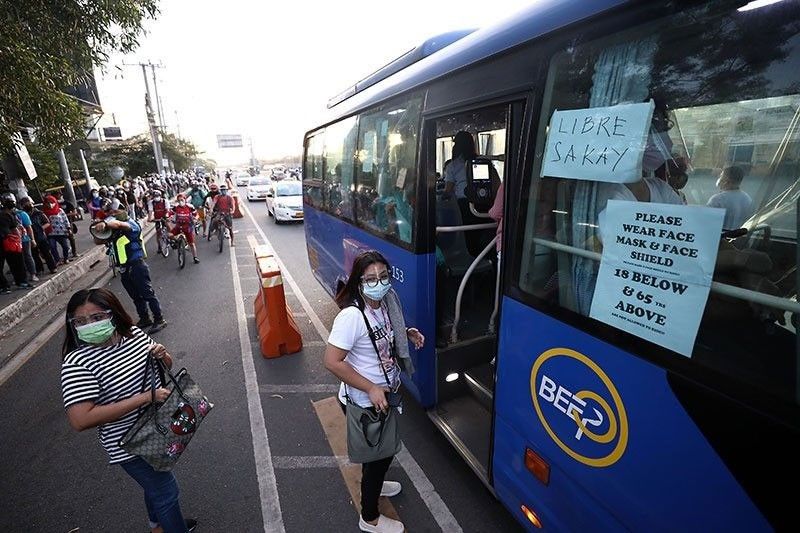Take Full Advantage Of Direct Exposure with Transit Advertising Philippines
Take Full Advantage Of Direct Exposure with Transit Advertising Philippines
Blog Article
How Transportation Advertising Can Change Mass Transit Spaces Into Dynamic Marketing Operatings Systems
Transportation advertising and marketing holds considerable possibility to redefine public transportation spaces right into vibrant advertising platforms that educate and involve. As we discover the multifaceted advantages and progressing methods of transportation marketing, it increases the concern of exactly how this change might redefine our interactions with both brands and the city setting.
Advantages of Transit Advertising

Furthermore, transit advertising and marketing is highly cost-efficient compared to traditional media. It enables marketers to attain high perceptions at lower expenses, making the most of return on financial investment. The captive target market of commuters supplies a possibility for brands to share their messages to individuals that are frequently responsive throughout their travel times.
In addition, the dynamic nature of transportation advertising permits campaigns to be updated regularly, ensuring that messaging stays pertinent and timely. This adaptability can be vital in reacting to market patterns or advertising occasions, keeping the brand top-of-mind for customers. Last but not least, the pervasive existence of transportation advertising and marketing adds to brand recall; duplicated direct exposure within familiar travel contexts strengthens brand name recognition and cultivates consumer loyalty, eventually enhancing and driving sales brand credibility.
Kinds of Transportation Advertising And Marketing
Mass transit systems offer different styles for advertising, each dealing with various advertising and marketing approaches and audience engagement methods. One famous kind is external bus and train covers, which cover the whole lorry and develop a mobile signboard effect, permitting high presence in metropolitan atmospheres. These covers can catch interest as they pass through hectic streets, reaching a diverse target market.
One more prominent format is interior advertising and marketing, that includes posters, digital screens, and advertisements on transportation seats. These positionings engage passengers throughout their trip, reinforcing brand name messaging in a constrained area. Digital displays, in certain, use the benefit of dynamic content, making it possible for advertisers to update messages in real-time.
Terminal marketing is also substantial, featuring posters, banners, and interactive stands within transit stations. These advertisements leverage foot website traffic and can target certain demographics based on area.
Lastly, advertising partnerships with transportation authorities can cause unique projects, such as themed transportation experiences or events, enhancing the general engagement with travelers. Each type of transit advertising uses distinct benefits, permitting brands to customize their strategy to efficiently reach their target audience within the public transportation environment.
Engaging Commuters Properly
Commuters are significantly inundated with marketing messages throughout their daily journeys, making it essential for brands to involve them in innovative ways. To catch focus in this crowded area, marketers have to prioritize imagination and importance. Utilizing captivating visuals and concise messaging can considerably improve the chance of engagement.
Interactive elements, such as QR codes or enhanced truth attributes, can additionally transform static ads into immersive experiences, promoting a much deeper link with the target market. Brand names should concentrate on addressing commuters' requirements and rate of interests, customizing messages to reverberate with their way of living, whether via promos for neighborhood businesses or services designed to enhance their commuting experience.
Furthermore, timing plays an important function; tactically putting ads during peak commuting hours can take full advantage of exposure and effect. Engaging commuters effectively also entails leveraging social media sites assimilation, enabling travelers to share their experiences or promotions straight from transportation systems, thus enhancing brand reach.
Essentially, reliable involvement depends upon understanding the commuter trip and producing compelling, interactive, and pertinent advertising and marketing experiences that not only capture focus however likewise drive action and commitment. By doing so, brands can transform mass transit into a dynamic advertising and marketing platform that resonates with its target market.

Measuring Advertising And Marketing Effect
How can brand names precisely assess the effectiveness of their ad campaign in transit atmospheres? Measuring the influence of transit advertising calls for a diverse approach that incorporates quantitative and qualitative metrics. One common method is tracking interaction through mobile analytics, where brand names can examine foot traffic patterns and application interactions in the past, during, and after projects.
Surveys can give useful insights right into brand name recall and consumer view, enabling brand names to evaluate just how well their messages resonate with travelers. Additionally, checking social networks involvement pertaining to certain campaigns can expose changes in public perception and brand conversation.

Furthermore, collaborating with transit companies can boost dimension precision, as they frequently possess in-depth group information on ridership fads. By integrating these approaches, brands can establish an extensive understanding of their Check This Out advertising efficiency, guaranteeing that their campaigns not only reach yet additionally influence their target market effectively.
Future Fads en route Marketing
A substantial change is prepared for in transportation marketing as technical improvements and altering consumer behaviors reshape the landscape. Transit Advertising Philippines. The assimilation of interactive media and digital displays is expected to boost involvement, enabling brands to deliver vibrant web content that resonates with diverse target markets. As public transport systems accept smart technology, marketers will certainly leverage real-time data analytics to customize messages based on passenger demographics the original source and actions
Additionally, increased reality (AR) is positioned to reinvent the way travelers engage with ads. By providing immersive experiences, AR can change a mundane trip into an engaging story that captures focus and promotes brand commitment. This development will likely encourage marketers to create even more experiential campaigns that drive customer interaction.
Sustainability is an additional vital trend affecting transit advertising and marketing. As environmental awareness grows, brand names visit here will increasingly look for to align with eco-friendly methods, making use of sustainable products and promoting eco-friendly initiatives within their campaigns.
Verdict
In final thought, transportation marketing supplies significant advantages by enhancing brand visibility and engaging a captive audience. As trends evolve, the potential for innovative interactions between brand names and travelers is positioned to expand, making sure that transportation advertising and marketing stays a crucial element of contemporary advertising techniques.
Transit advertising holds significant possibility to redefine public transport areas into dynamic advertising systems that notify and engage. The prevalent existence of transit advertising adds to brand name recall; repeated exposure within acquainted travel contexts reinforces brand name understanding and promotes consumer commitment, eventually enhancing and driving sales brand name credibility.
How can brand names precisely assess the performance of their marketing campaigns in transportation atmospheres?In conclusion, transportation marketing offers considerable advantages by boosting brand presence and engaging a restricted audience. Transit Advertising Philippines. As fads progress, the potential for cutting-edge interactions in between brands and travelers is positioned to grow, making certain that transit advertising and marketing stays an essential element of modern-day marketing strategies
Report this page